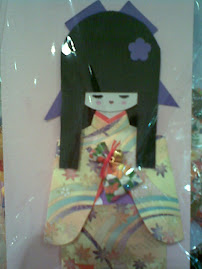Paper folding art is estimated to derive from China in the first century not long after the first invention of paper. Then, the method of producing paper was brought to Japan by the Buddhist monks in the 6th century. Paper has been widely used to date in Japan in architecture (for example fusuma or pushing door), and in various religious rituals, in particular Shinto.
At the time method of producing paper was newly introduced in Japan, paper was an expensive and valuable thing. Therefore, paper folding was only practiced by the nobility. Until the beginning of Edo era (1600 - 1868), there was a mass production of paper and paper started to be widely used. Entering the Meiji era (1868 – 1912), paper folding art known as Origami was used for teaching in kindergartens and secondary schools.
Origami is not the monopoly of Eastern people. In Western world, this art had developed since the 8th century when the Moor invaded Spain. The Islamic intellectuals who had great interest in mathematics and astronomy were also attracted to the symmetric pattern found in this paper folding art.
The progress of global trade then had brought Japanese esthetics to the whole world, particularly in the 18th century. A German education figure, Friedrich Froebel (1782 – 1852) introduced this paper folding art to the kindergartens. Froebel believed that the objective of teaching Origami was to enhance unity through cooperative activities (not competition), to learn about nature, to harmonize the brain and hands, and to build the ability to actualize oneself.
Nowadays, there are many origami associations throughout the world. Origami has developed as an art, and has been utilized not only as a form of art, but also applied in accordance with many other aspects it has.
Thursday, January 31, 2008
Subscribe to:
Post Comments (Atom)








2 comments:
Keren banget....
Siapa yang buat. Saya mau jualin deh, bisa ngak? Berapa harganya?
kalau berbentuk hiasan dinding yang agak besar kira kira harga berapa ya?
Post a Comment